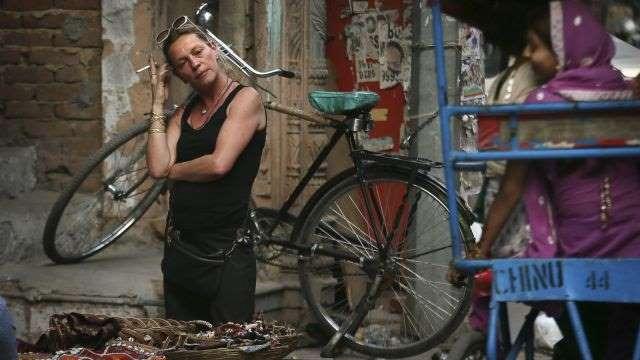March 2, 2013
The seven books of Jagat Singh's Ramayana have been separated for over 150 years; five books are maintained by the British Library while two others are in Mumbai and Udaipur. Digitizing the texts and uniting them online will preserve the ancient story for generations to come.

The British Library
March 2, 2013
The seven books of Jagat Singh's Ramayana have been separated for over 150 years; five books are maintained by the British Library while two others are in Mumbai and Udaipur. Digitizing the texts and uniting them online will preserve the ancient story for generations to come.

The British Library
The Ramayana I knew as a child was the Punjabi version my parents told me during Diwali. We had no books at home – my immigrant family was largely illiterate – so I never expected to come across this oral story in a bookshop. When I found RK Narayan's version as a young adult it felt like a joyous homecoming.
Looking back at it now, Narayan's Ramayana feels out of date, and is based on a particular version written by the Tamil poet Kamban in the 12th century. So I decided to write a version in verse, due to be published later this year, drawing on all the English versions of the Ramayana I could find, all of the religious traditions and a range of visual responses.
This ancient story tells how Rama's wife, Sita, was abducted by Ravana, and how he battles to win her back. The oldest written version is agreed to have been written by someone who was known as Valmiki. This has been followed by many different written versions, each with its own tradition, in countries such as India, Nepal, Thailand, Burma, Laos, Malaysia, the Philippines, Japan and China. For the first 600 years the Ramayana was not a religious story, but religious versions are popular among Hindus, Buddhists, Jains and Sikhs. It has inspired poetry, prose, theatre, cinema, painting, sculpture and puppetry, but the story thrives to this day as much an oral story as it does on the page.
One of the most striking written versions I came across in my research is the one commissioned by Rana Jagat Singh of Mewar, which has survived since the 17th century. An illustrated manuscript in seven books, Jagat Singh's Ramayana was commissioned in 1649 and has been separated for over 150 years: five of the books have been in the British Library since 1844 and the other two books have been in Mumbai and Udaipur. Now the British Library has digitized their holdings and all that remains of the work is to be reunited online.
The Jagat Singh Ramayana is not only packed full of remarkable paintings – images that help us visualize an ancient imagination from the viewpoint of 17th-century Indians – it is also dazzlingly multicultural. Commissioned by a Sikh, this Sanskrit text owes a debt to a Hindu storyteller, and was illustrated by a Muslim. Most of the manuscript has also spent a large part of its life in the west. The internet is the rightful home for such a great text. The Ramayana is one of the greatest stories ever written, visualized or heard. As such it should be available to the world.
Perhaps the virtual reconstruction of the Jagat Singh manuscript and the similarities between the storylines of the Ramayana and the Iliad will reveal deeper cultural similarities between east and west. Perhaps this digitized version of the story will allow Asian communities living in Britain easier access to the cultural treasures in their background. Perhaps teachers will use this great store of images in the classroom and inspire children of all backgrounds to engage with a text that is not only a love story, but a tale of physical and verbal battles involving humans, demons and animals. These tales enthralled me when I was a child. This digitized version will inspire 21st-century children all over the world.
This article originally appeared on guardian.co.uk







































































































